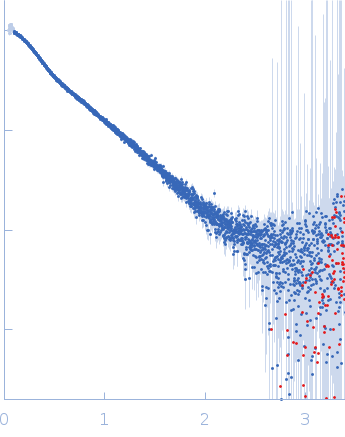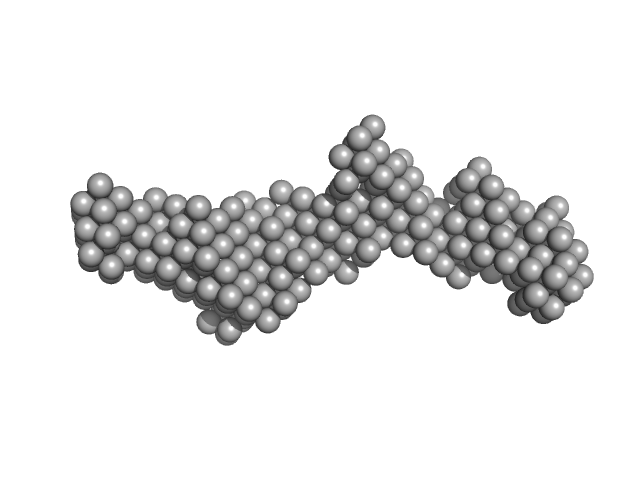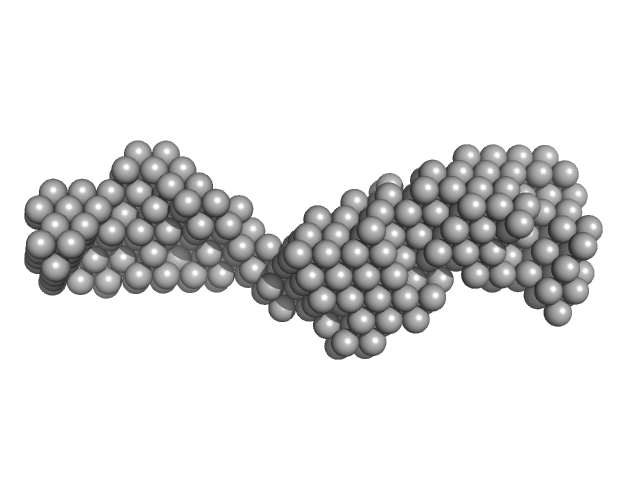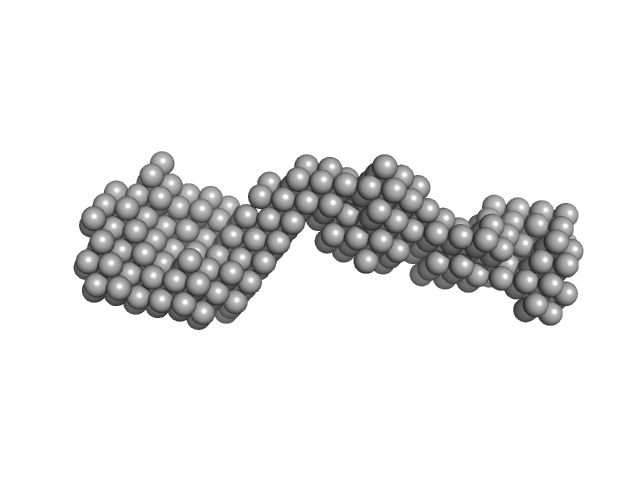| MWexperimental | 45 | kDa |
| MWexpected | 39 | kDa |
| VPorod | 63 | nm3 |
|
log I(s)
5.75×10-2
5.75×10-3
5.75×10-4
5.75×10-5
|
 s, nm-1
s, nm-1
|
|
|
|

|
|

|
|

|
|
Synchrotron SAXS data from solutions of BC120 G25C RNA in phosphate buffered saline, pH 7.4 were collected on the B21 beam line at the Diamond Light Source (Didcot, UK) using a Eiger 4M detector at a sample-detector distance of 3.7 m and at a wavelength of λ = 0.094 nm (I(s) vs s, where s = 4πsinθ/λ, and 2θ is the scattering angle). In-line size-exclusion chromatography (SEC) SAS was employed. The SEC parameters were as follows: A 60.00 μl sample at 3 mg/ml was injected at a 0.16 ml/min flow rate onto a Shodex KW403-4F column at 25°C. 600 successive 3 second frames were collected. The data were normalized to the intensity of the transmitted beam and radially averaged; the scattering of the solvent-blank was subtracted.
|
|
|||||||||||||||||||||